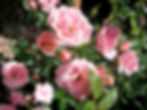Hey, you know, flowers.
So. Four months have passed, and four friends are gone.
January – lymphoma.
February – brain cancer.
March – metastatic kidney cancer.
April – metastatic breast cancer.
Some local residents, some not. One man, three women. Three adults (all too young) and one teenager (far, far too young). All with loving connections with family and friends near and far. All spending their lives making the world a better place, day in, day out – until cancer brought the count of those earthbound days to a final stop.
It’s hard to avoid asking questions like “Why?” and “How can I make sure I never (or never again) get cancer?” I haven’t seen satisfactory answers to either of these questions. In fact, it seems that the more we find out about cancer, the more complex all the related questions become.
When I was in cancer treatment and shuttling among doctor’s appointments, weekly infusions, and support group meetings, I met a lot of people with cancer. When I talked to other people about my fellow “cancer club members,” they often would anxiously say to me, “Do you think there is something wrong with our neighborhood (or town, or county, or state)?” For a little while, I asked these questions too. However, as I communicated more widely about cancer through my blog and Facebook, I found that cancer centers throughout the country are busy nonstop, communities all over have cancer in their midst, and people everywhere have the same worries about their own neighborhoods, towns, counties, states. My thinking changed. Not to say that there aren’t specific situations where a cancer or disease “cluster” leads to the investigation and discovery of a specific local cause – there are. But I don’t think I’m living in one of them, and disease clusters don’t explain most incidences of cancer.
The problem defies simple explanation. Let’s face it – we don’t have this disease figured out yet, and it’s costing lives, every day.
This past week found me once again in front of the mammogram machine. I still have an annual mammogram on the left side, because had a right-side-only mastectomy. They take extra pictures because of my history, and sometimes I end up coming back in for an ultrasound. They are cautious with me, and I appreciate it. But there is no denying that the testing, and the wondering if it will find anything, and the fact that I have so little control over how it plays out, all cause a spike in my stress level. No matter my advantages and actions – top-notch surgical and oncological care, comprehensive treatment, ongoing cancer-fighting medication, and the determination to exercise frequently and eat healthfully – I cannot safely assume that I will remain cancer-free.
Despite humanity’s inexorable drive to achieve control and understanding, cancer remains elusive and confounding. Recent and laudable developments in genetic science and testing, despite adding important information to the conversation, have complicated the question of what to do about what we know. This article provides more details about the growing confusion over whether certain gene mutations cause existing or future malignancies, and the continuing difficulty of determining effective plans of action.
I know this is probably not comforting to anyone worried about cancer. But it’s where things stand now. Perhaps comfort can more reliably come from other places.
When you leave the St. Barnabas Breast Center after a breast imaging appointment you are offered a fresh flower, donated by a local garden center, to take with you. Five years ago, when I was making frequent appearances there leading up to my diagnosis and surgery, this put me off completely. I would look at the bucket of multicolored roses and think, “Wow, is this supposed to help me feel better? I’m facing a life-threatening illness. A flower doesn’t even begin to make up for it.” I almost always left them where they sat in the corner of the room.

At this most recent appointment, the radiology tech took the necessary images and then offered me a flower. As I looked at them and found myself deciding which one I liked the best, I realized that something was different. The flower had become completely separate from the experience, and the message that came across had changed. It wasn’t “here are flowers that we hope will make it better,” or “we hope these flowers will distract from your nightmare,” or even “the beauty of flowers should help you think more positively.” What I got from it was something like “Hey, you know, flowers.”
With the judgment taken away, the flower is an opportunity. It’s just sitting there asking if you would like to have it around to look at. Which I decided I did, and I took one home. I enjoyed it for a few days until it faded and drooped and smacked a little too obviously of the end of the cycle of life, at which point I threw it out.
Often, what we can do to feel better in the face of cancer has no direct connection with cancer. We can look at a rose. We can go for a walk. We can tell someone we love how we feel.

Of the four friends I spoke of who have recently departed this earth, Mary Ann Wasil is the one who died in April. Mary Ann founded and grew an organization called the Get In Touch Foundation, which promotes breast self-examination (BSE) and uses a pink Gerbera daisy as its logo and symbol. It seems to say, “Hey, BSE. But also, you know, flowers.” Mary Ann understood “hey, you know, flowers” better than almost anyone I know. She lived in hope that the rest of us would get it too. This video is one way that she is still making it happen even now. Watch it and see what it makes you think about.
And hey, you know, flowers.









